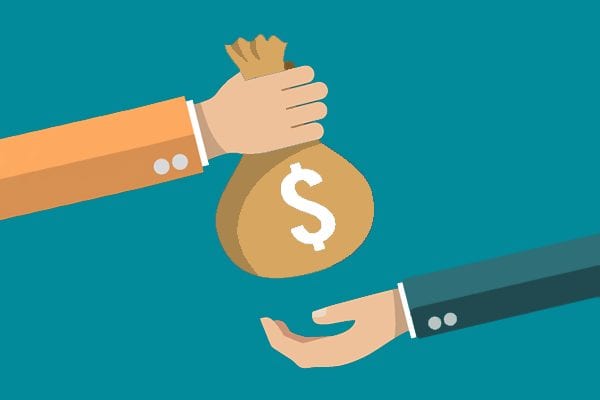How To Choose The Best Online Loan?
Loans can help you achieve major life goals you couldn’t otherwise afford, like attending school or purchasing a home. There are loans for all sorts of actions, as well as ones will repay existing debt. Before borrowing any cash, however, you need to be aware of type of mortgage that’s suitable for your requirements. Listed here are the commonest types of loans and their key features:

1. Unsecured loans
While auto and home loans are prepared for a specific purpose, personal loans can generally be used for anything you choose. Some people use them commercially emergency expenses, weddings or do-it-yourself projects, by way of example. Unsecured loans are often unsecured, meaning they cannot require collateral. They own fixed or variable rates and repayment relation to its several months a number of years.
2. Automotive loans
When you buy a vehicle, an auto loan lets you borrow the cost of the vehicle, minus any advance payment. The automobile is collateral and is repossessed when the borrower stops making payments. Auto loan terms generally vary from Several years to 72 months, although longer loans have become more widespread as auto prices rise.
3. Student Loans
Student education loans will help spend on college and graduate school. They are presented from both the govt and from private lenders. Federal student loans tend to be desirable because they offer deferment, forbearance, forgiveness and income-based repayment options. Funded with the U.S. Department of Education and offered as financial aid through schools, they typically do not require a credit check. Loan terms, including fees, repayment periods and rates of interest, are the same for every borrower sticking with the same type of home loan.
Student loans from private lenders, on the other hand, usually need a credit check, every lender sets its very own loan terms, interest rates and costs. Unlike federal student loans, these refinancing options lack benefits including loan forgiveness or income-based repayment plans.
4. Home mortgages
A home financing loan covers the purchase price of a home minus any deposit. The home acts as collateral, which can be foreclosed from the lender if home loan payments are missed. Mortgages are generally repaid over 10, 15, 20 or Three decades. Conventional mortgages aren’t insured by government departments. Certain borrowers may qualify for mortgages backed by government departments just like the Federal housing administration mortgages (FHA) or Veterans Administration (VA). Mortgages could have fixed rates that stay the same through the lifetime of the loan or adjustable rates that can be changed annually with the lender.
5. Hel-home equity loans
A house equity loan or home equity line of credit (HELOC) lets you borrow up to area of the equity in your home to use for any purpose. Hel-home equity loans are installment loans: You have a one time and pay it back over time (usually five to Three decades) in regular monthly installments. A HELOC is revolving credit. Like with a card, you can are from the credit line as needed after a “draw period” and only pay the interest on the sum borrowed before draw period ends. Then, you typically have Two decades to repay the loan. HELOCs have variable rates of interest; home equity loans have fixed interest levels.
6. Credit-Builder Loans
A credit-builder loan was created to help individuals with a low credit score or no credit report grow their credit, and could n’t need a credit check needed. The lending company puts the loan amount (generally $300 to $1,000) into a piggy bank. You then make fixed monthly obligations over six to A couple of years. When the loan is repaid, you receive the money back (with interest, occasionally). Before you apply for a credit-builder loan, guarantee the lender reports it to the major services (Experian, TransUnion and Equifax) so on-time payments can boost your credit score.
7. Debt consolidation reduction Loans
A personal debt debt consolidation loan is often a personal bank loan made to repay high-interest debt, like charge cards. These loans can help you save money if your rate of interest is lower than that of your existing debt. Consolidating debt also simplifies repayment because it means paying only one lender rather than several. Reducing personal credit card debt with a loan is able to reduce your credit utilization ratio, improving your credit score. Debt consolidation reduction loans may have fixed or variable interest rates as well as a selection of repayment terms.
8. Payday advances
One kind of loan to stop may be the cash advance. These short-term loans typically charge fees equivalent to annual percentage rates (APRs) of 400% or higher and has to be repaid entirely by your next payday. Provided by online or brick-and-mortar payday loan lenders, these refinancing options usually range in amount from $50 to $1,000 and demand a appraisal of creditworthiness. Although pay day loans are easy to get, they’re often challenging to repay punctually, so borrowers renew them, ultimately causing new fees and charges along with a vicious circle of debt. Loans or credit cards are better options if you want money for an emergency.
Which Loan Gets the Lowest Monthly interest?
Even among Hotel financing of the type, loan rates may vary determined by several factors, like the lender issuing the borrowed funds, the creditworthiness with the borrower, the money term and whether or not the loan is secured or unsecured. Generally speaking, though, shorter-term or quick unsecured loans have higher interest rates than longer-term or secured finance.
Check out about Hotel financing go to see this web page
